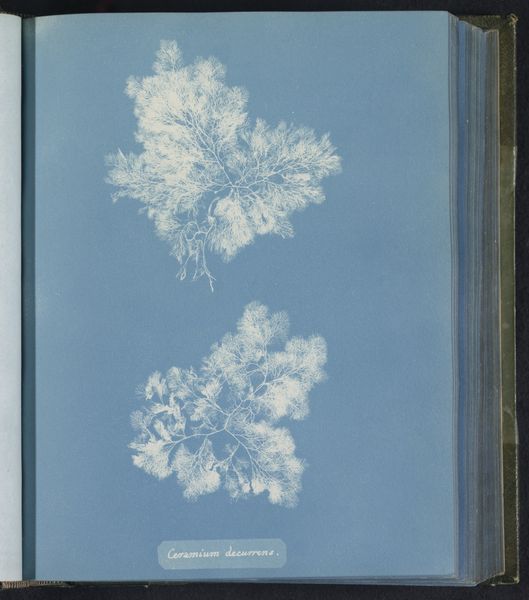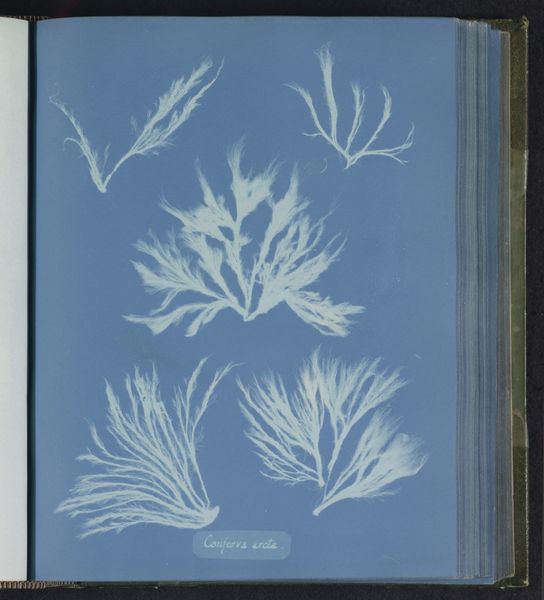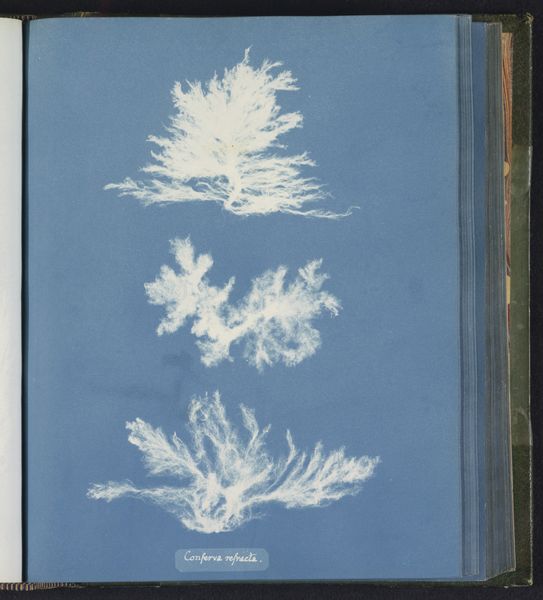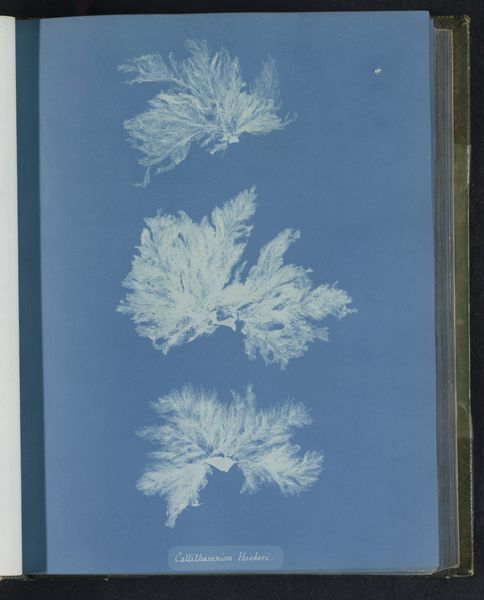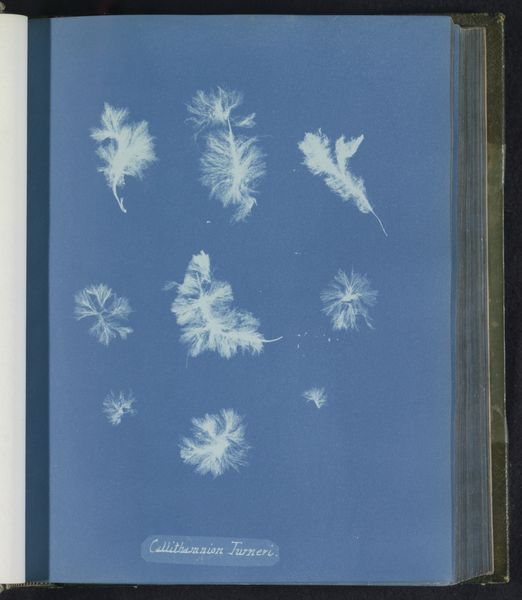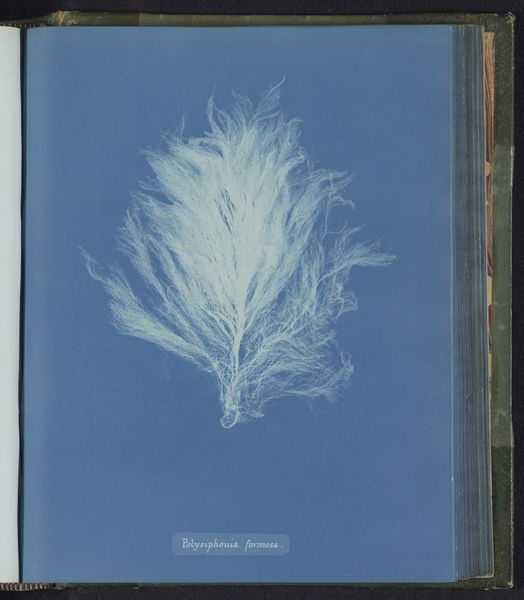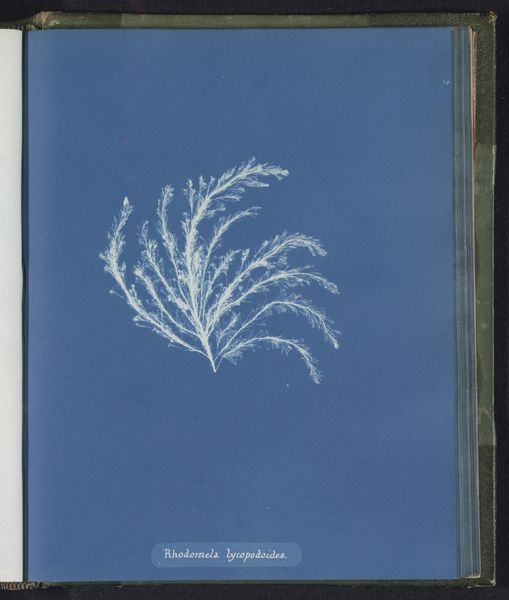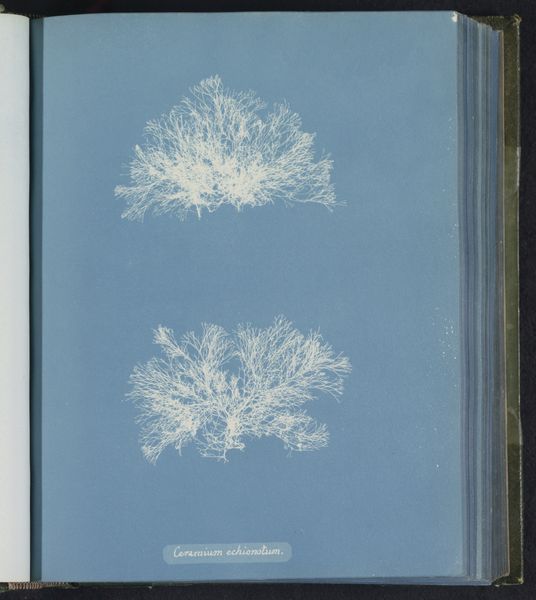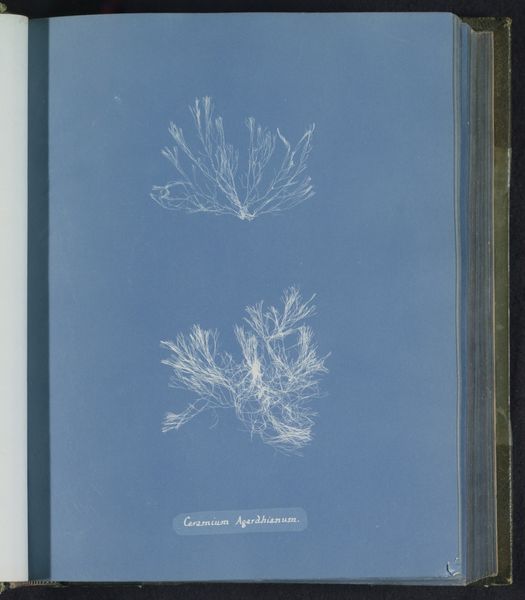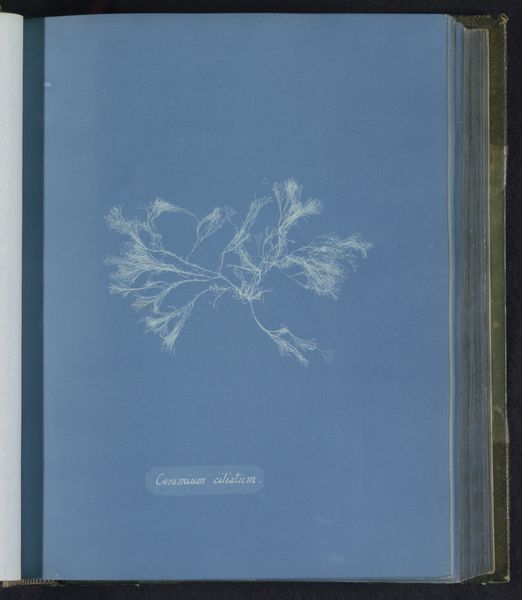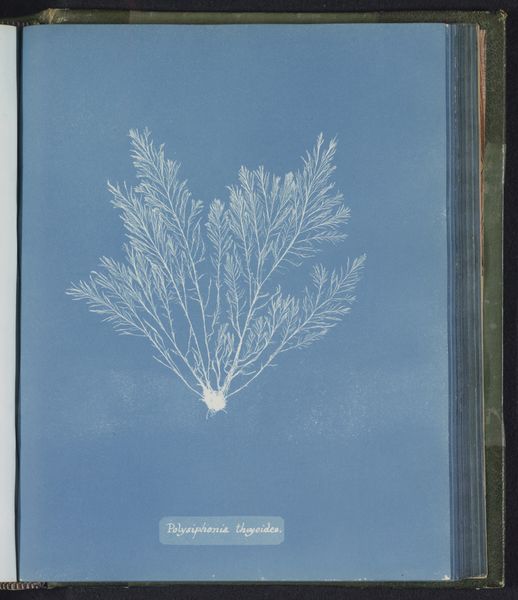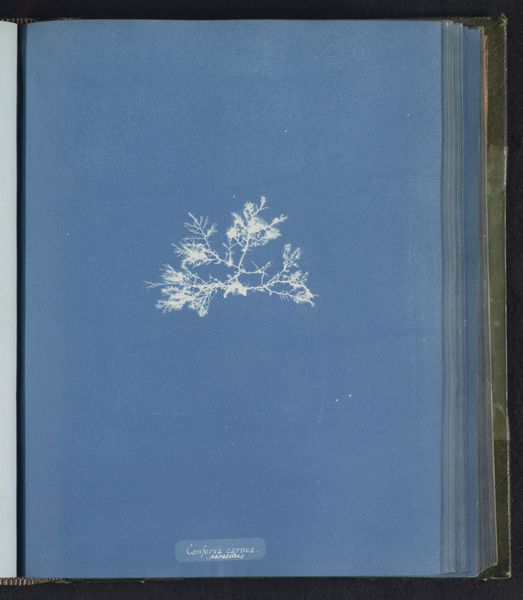
print, cyanotype, photography
# print
#
cyanotype
#
photography
Dimensions: height 250 mm, width 200 mm
Copyright: Rijks Museum: Open Domain
This is a cyanotype made by Anna Atkins in the mid-19th century. Notice the ghostly white specimens set against a vibrant Prussian blue ground. This stark contrast immediately captures our attention, creating a sense of ethereal beauty. Atkins, a botanist by trade, used cyanotype to record and classify botanical specimens. Rather than relying on conventional drawing or pressing, the photographic process allowed Atkins to capture the very essence of each alga. But what exactly do we mean by essence? Is it the outline, the texture or perhaps the shadows cast? Atkins work beautifully destabilizes the boundaries between art and science. She prompts us to consider how form itself carries meaning. The plant itself becomes a sign. It is used not just for scientific classification but also as a form of poetic expression. The negative space that surrounds the specimens is equally important, as it highlights the organic shapes. The use of cyanotype is a reminder that our perception is always mediated by technology and cultural codes. Yet, despite its scientific origins, "Conferva arcta" invites us to contemplate the beauty of nature.
Comments
No comments
Be the first to comment and join the conversation on the ultimate creative platform.
